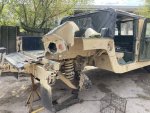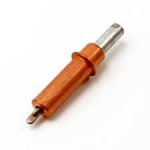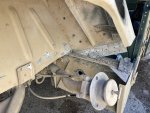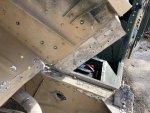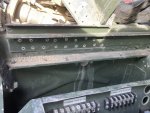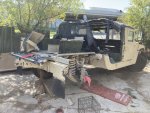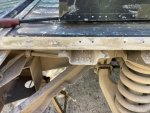My son and I replaced a rear fender over the summer. I found the Youtube video by AMTAK2 to be helpful. One thing we did different was that we completely removed and reattached the piece across the front attachment point (behind the rear seat area) rather than cutting a v-notch in it and bending it. For removing the rivets, we mostly used an air chisel with the point ground into a punch matching the pin diameter, knocked the pins out, drilled through the heads with a larger drill until the heads came off, then punched out the remainder. This went really fast with two working on it after getting the technique right.
The Cherrymax rivets are really hard to set manually, so I took advice in other threads here on SS and bought the Milwaukee M12 rivet gun, actually the 2550-22 kit that includes two batteries, charger, the nose pieces and carrying case. It did a good job setting the rivets. We had a bit of trouble initially with it pulling and stopping when the trigger was pulled, which seemed to be a problem with the feed of the mandrels into the catch chamber. A little shake after each rivet seemed to make it work a lot better, or maybe it just took a while to break in.
TM9-2320-280-24P (Figs 197 & 199) is useful for identifying where the various lengths of rivets are used. The -3 length rivets are readily available, but other lengths are harder to find. I ended up buying several lengths from Skybolt Aerospace Fasteners (e.g. CR3213-6-4, CR3213-6-7 and CR3213-6-9). The Cherrymax rivets are sensitive to the grip length and won't pull right if they are too long or too short for the material. For example, the -3 rivets work for a range of 3/16 down to 2/16 (1/8"), so they work for either three or two thicknesses of the fender material, such as when riveting the connection between the fender and the floor of the bed. In a few places the rivets were too long, and pulled better with a 3/16" rivet washer on the back side; these washers are about 1/16" thick and are a hardware store item. As I recall, the -9s at the back of the fender that pass through the heavy structural member pulled better (tighter) with a washer on them. Also, you might find some rivets for sale that are oversize, i.e. increased diameter for dealing with damaged holes. If you use oversize rivets you will probably want to get the matching drill. As I recall, the standard rivet uses a #10 drill (0.193"), and oversize Cherrymax rivets use a #5 (0.205").



